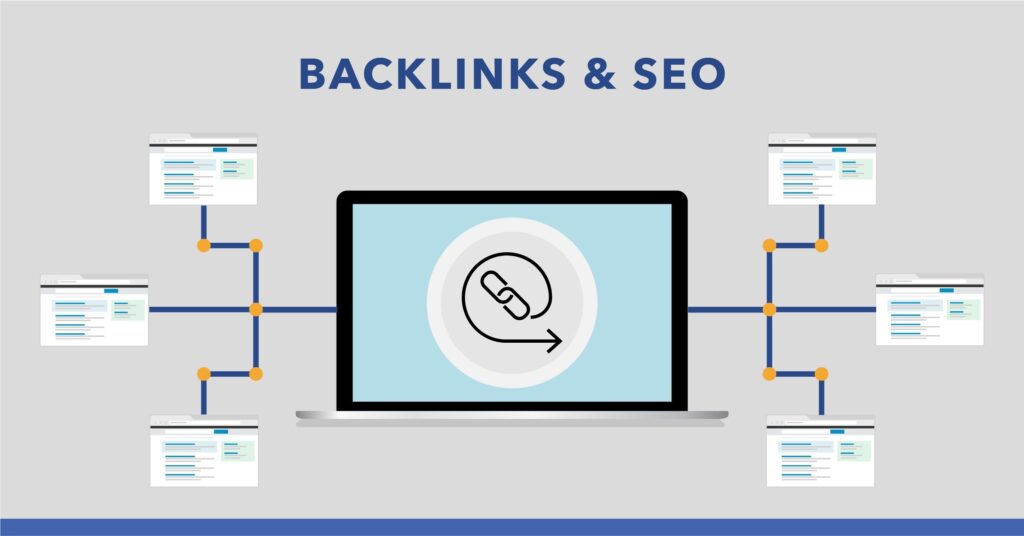Backlinks are an essential part of search engine optimization (SEO). They act as a vote of confidence from one website to another, signaling to search engines that the linked content is trustworthy and valuable. Understanding how backlinks work can help website owners improve their rankings, attract more traffic, and establish credibility in their niche. This article explains what backlinks are, how they function and why they matter in an SEO strategy.
What Are Backlinks?
A backlink is a link from one website to another. These links connect web pages across the internet, creating pathways for users and search engines to discover content. For example, if a blog about digital marketing links to an article on SEO best practices, that link is considered a backlink for the SEO article.
Backlinks are also known as inbound links or incoming links because they direct users from one website into another. They play a key role in how search engines evaluate the relevance and authority of a webpage.
Types of Backlinks
Backlinks are not all the same. They can be classified into different types based on their attributes and the context in which they are used.
- Do-Follow Backlinks
These are the most valuable backlinks for SEO. A do-follow link allows search engines to follow the link to the destination site, passing along “link equity” or “SEO juice.” This equity boosts the ranking potential of the linked webpage.
- No-Follow Backlinks
A no-follow backlink has a tag (rel=”nofollow”) that instructs search engines not to pass link equity. While these links do not directly impact SEO rankings, they still provide value by driving traffic and increasing brand visibility.
- Anchor Text Backlinks
These links use descriptive text, known as anchor text, to hyperlink to another site. For example, in the phrase “Learn about SEO strategies,” the words “SEO strategies” act as the clickable anchor text. Search engines use anchor text to determine the relevance of the linked page to specific keywords.
- Image Backlinks
Backlinks embedded in images are another common type. When someone clicks on an image that links to your site, it counts as a backlink. The alt text of the image helps search engines understand its context and can influence SEO.
- Editorial Backlinks
These links occur naturally when a website references another site as a credible source. For example, a news article might link to a study hosted on another site. Editorial backlinks are highly valuable because they are organic and come from authoritative sources.
How Search Engines Use Backlinks
Search engines like Google use backlinks to assess the popularity and relevance of a webpage. The more high-quality backlinks a site has, the more likely it is to rank higher in search engine results pages (SERPs). Here’s how this process works:
- Crawling and Indexing
Search engines send out “spiders” or “bots” to crawl the internet. When these bots encounter a backlink, they follow it to the linked page. This helps search engines discover new pages and update their index.
- Evaluating Authority
Backlinks from authoritative sites carry more weight than those from low-quality or spammy sources. For instance, a backlink from a reputable news website is more impactful than one from an obscure blog.
- Assessing Relevance
Search engines consider the context of a backlink. A link from a site within the same niche or industry is seen as more relevant than one from an unrelated topic.
- Measuring Link Diversity
Having backlinks from a variety of unique domains signals that the content is widely trusted. A diverse backlink profile is a positive ranking factor.
The Importance of Backlink Quality
Not all backlinks contribute equally to SEO. Search engines prioritize quality over quantity when evaluating links. Here are some factors that determine the quality of a backlink:
- Domain Authority
Links from sites with high domain authority (a score that measures a website’s credibility) are more valuable than links from low-authority domains.
- Relevance
A backlink from a site related to your niche is more impactful. For example, if you run a health blog, a backlink from a medical website carries more weight than one from a fashion blog.
- Traffic Potential
Links from sites with high traffic can drive visitors to your site, increasing engagement and visibility.
- Placement
Backlinks placed within the main content of a page are more valuable than those in the footer or sidebar. Search engines assume that links in the main content are more relevant to the page’s topic.
- Anchor Text
Anchor text should be descriptive and relevant to the linked content. Overusing exact-match keywords in anchor text can lead to penalties from search engines.
How to Build Backlinks
Building a strong backlink profile requires effort and a well-thought-out strategy. Below are some effective methods to earn high-quality backlinks:
- Create High-Quality Content
Content that provides value, such as in-depth guides, research studies, or unique insights, is more likely to attract backlinks. Focus on producing content that other sites will want to reference.
- Guest Blogging
Writing articles for other websites allows you to include backlinks to your own site. Ensure the host site is relevant to your niche and has a good reputation.
- Outreach Campaigns
Reach out to bloggers, journalists, and influencers in your industry to inform them about your content. Personalized outreach increases the chances of earning backlinks.
- Broken Link Building
Identify broken links on other websites and suggest your content as a replacement. This approach helps site owners fix their broken links while providing you with a backlink.
- Directory Submissions
Submit your site to reputable online directories. These directories act as a reference point and can contribute to your backlink profile.
Avoiding Backlink Pitfalls
While backlinks are beneficial, pursuing them carelessly can lead to penalties. Here are some practices to avoid:
- Buying Links
Purchasing backlinks violates Google’s guidelines and can result in penalties.
- Overusing Exact-Match Anchor Text
Relying too heavily on keywords in anchor text can make your backlink profile appear manipulative.
- Link Exchanges
Excessive reciprocal linking (you link to me, I link to you) can be seen as spammy behavior.
- Low-Quality Links
Backlinks from spammy, irrelevant, or poorly ranked sites can harm your SEO.
The Role of Backlinks in Modern SEO
Although backlinks remain a vital ranking factor, search engines are increasingly focusing on user experience and content quality. Here’s how backlinks fit into the broader SEO landscape:
- Complementary Factor: Backlinks support strong content and good technical SEO. They are not a substitute for either.
- Reputation Signal: They demonstrate authority and trustworthiness to search engines.
- Traffic Driver: Backlinks can generate referral traffic, which may convert into leads or sales.
Measuring Backlink Success
To track the effectiveness of your backlink strategy, use tools like Google Search Console, Ahrefs or SEMrush. These platforms allow you to monitor:
- The number of backlinks your site has.
- The authority of linking domains.
- Changes in your rankings and organic traffic.
Conclusion
Backlinks are a cornerstone of SEO, influencing how search engines perceive and rank web pages. By focusing on quality over quantity and employing ethical link-building practices, you can develop a strong backlink profile that boosts your site’s authority, traffic, and rankings. In today’s competitive digital landscape, understanding how backlinks work is essential for long-term success.






